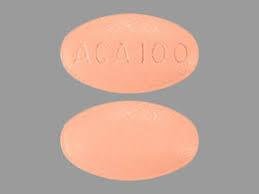What is Calquence?
Calquence is a prescription medicine used to treat adults with:
- Mantle cell lymphoma (MCL) who have received at least one prior treatment for their cancer.
- Chronic lymphocytic leukemia (CLL) or small lymphocytic lymphoma (SLL).
It is not known if Calquence is safe and effective in children.
What should I tell my healthcare provider before taking Calquence?
Before taking Calquence, tell your healthcare provider about all of your medical conditions, including if you:
- have had recent surgery or plan to have surgery. Your healthcare provider may stop Calquence for any planned medical, surgical, or dental procedure.
- have bleeding problems.
- have or had heart rhythm problems.
- have an infection.
- have or had liver problems, including hepatitis B virus (HBV) infection.
- are pregnant or plan to become pregnant. Calquence may harm your unborn baby and problems during childbirth (dystocia).
- If you are able to become pregnant, your healthcare provider may do a pregnancy test before you start treatment with Calquence
- Females who are able to become pregnant should use effective birth control (contraception) during treatment with Calquence and for 1 week after the last dose of Calquence.
- are breastfeeding or plan to breastfeed. It is not known if Calquence passes into your breast milk. Do not breastfeed during treatment with Calquence and for 2 weeks after your last dose of Calquence.
Tell your healthcare provider about all the medicines you take, including prescription and over‑the‑counter medicines, vitamins, and herbal supplements. Taking Calquence with certain other medications may affect how Calquence works and can cause side effects. Especially tell your healthcare provider if you take a blood thinner medicine.
How should I take Calquence tablets?
- Take Calquence exactly as your healthcare provider tells you to take it.
- Do not change your dose or stop taking Calquence unless your healthcare provider tells you to.
- Your healthcare provider may tell you to decrease your dose, temporarily stop, or completely stop taking Calquence if you develop certain side effects.
- Do not switch (interchange) your Calquence tablets with Calquence capsules.
- Take Calquence 2 times a day (about 12 hours apart).
- Take Calquence with or without food.
- Swallow Calquence tablets whole with a glass of water. Do not chew, crush, dissolve, or cut tablets.
- If you miss a dose of Calquence, take it as soon as you remember. If it is more than 3 hours past your usual dosing time, skip the missed dose and take your next dose of Calquence at your regularly scheduled time. Do not take an extra dose to make up for a missed dose.
How should I take Calquence capsules?
- Take Calquence exactly as your healthcare provider tells you to take it.
- Do not change your dose or stop taking Calquence unless your healthcare provider tells you to.
- Your healthcare provider may tell you to decrease your dose, temporarily stop, or completely stop taking Calquence if you develop certain side effects.
- Take Calquence 2 times a day (about 12 hours apart).
- Take Calquence with or without food.
- Swallow Calquence capsules whole with a glass of water. Do not open, break, or chew capsules.
- If you need to take an antacid medicine, take it either 2 hours before or 2 hours after you take Calquence.
- If you need to take certain other medicines called acid reducers (H-2 receptor blockers), take Calquence 2 hours before the acid reducer medicine.
- If you miss a dose of Calquence, take it as soon as you remember. If it is more than 3 hours past your usual dosing time, skip the missed dose and take your next dose of Calquence at your regularly scheduled time. Do not take an extra dose to make up for a missed dose.
What are the possible side effects of Calquence?
Calquence may cause serious side effects, including:
- Serious infections can happen during treatment with Calquence and may lead to death. Your healthcare provider may prescribe certain medicines if you have an increased risk of getting infections. Tell your healthcare provider right away if you have any signs or symptoms of an infection, including fever, chills, or flu-like symptoms.
- Bleeding problems (hemorrhage) can happen during treatment with Calquence and can be serious and may lead to death. Your risk of bleeding may increase if you are also taking a blood thinner medicine. Tell your healthcare provider if you have any signs or symptoms of bleeding, including:
- blood in your stools or black stools (looks like tar)
- pink or brown urine
- unexpected bleeding, or bleeding that is severe or you cannot control
- vomit blood or vomit that looks like coffee grounds
- cough up blood or blood clots
- dizziness
- weakness
- confusion
- changes in your speech
- headache that lasts a long time
- bruising or red or purple skin marks
- Decrease in blood cell counts. Decreased blood counts (white blood cells, platelets, and red blood cells) are common with Calquence, but can also be severe. Your healthcare provider should do blood tests to check your blood counts regularly during treatment with Calquence.
- Second primary cancers. New cancers have happened in people during treatment with Calquence, including cancers of the skin or other organs. Your healthcare provider will check you for skin cancers during treatment with Calquence. Use sun protection when you are outside in sunlight.
- Heart rhythm problems (atrial fibrillation and atrial flutter) have happened in people treated with Calquence. Tell your healthcare provider if you have any of the following signs or symptoms:
- fast or irregular heartbeat
- dizziness
- feeling faint
- chest discomfort
- shortness of breath
The most common side effects of Calquence include:
- headache
- diarrhea
- muscle and joint pain
- upper respiratory tract infection
- bruising
These are not all of the possible side effects of Calquence.
Call your doctor for medical advice about side effects. You may report side effects to FDA at 1‑800‑FDA‑1088.
Calquence Images
General information about the safe and effective use of Calquence
Medicines are sometimes prescribed for purposes other than those listed in a Patient Information leaflet. Do not use Calquence for a condition for which it was not prescribed. Do not give Calquence to other people, even if they have the same symptoms you have. It may harm them. You can ask your healthcare provider or pharmacist for more information about Calquence that is written for health professionals.
How should I store Calquence?
- Store Calquence at room temperature between 68°F to 77°F (20°C to 25°C).
- Keep Calquence and all medicines out of the reach of children.
What are the ingredients in Calquence?
Active ingredient: acalabrutinib
Inactive ingredients:
Tablet:
- Tablet core: low-substituted hydroxypropyl cellulose, mannitol, microcrystalline cellulose, and sodium stearyl fumarate.
- Tablet coating: copovidone, ferric oxide yellow, ferric oxide red, hypromellose, medium-chain triglycerides, polyethylene glycol 3350, purified water, and titanium dioxide.
Capsule
- Inactive ingredients: silicified microcrystalline cellulose, pregelatinized starch, magnesium stearate, and sodium starch glycolate.
- Capsule shell contains: gelatin, titanium dioxide, yellow iron oxide, FD&C Blue 2, and black ink.
For more information, go to www.CALQUENCE.com or call 1-800-236-9933.





